
HMS Chaser (D32/R306/A727) was an American-built Attacker-class escort carrier that served with the Royal Navy during the Second World War.

USS St. George (CVE-17) was laid down on 31 July 1941 as a C3-S-A2 by Ingalls Shipbuilding, Hull 296 of Pascagoula, Mississippi, under Maritime Commission contract as the (second) SS Mormacland for Moore-McCormack Lines, Inc.,. She was renamed St. George (AVG-17) by the United States Navy on 7 January 1942; and assigned to the United Kingdom under Lend-Lease as HMS Pursuer on 24 February 1942. The vessel was launched on 18 July 1942, sponsored by Mrs. Mary Ann S. Bartman. The escort carrier was reclassified ACV-17 on 20 August 1942, acquired by the US Navy and simultaneously transferred to Britain on 14 June 1943. She was reclassified CVE-17 on 15 July 1943.

The name Prince William (CVE-19) was assigned to MC hull 198, a converted C3 laid down by the Western Pipe and Steel Company, San Francisco, California, 15 December 1941.

HMS Atheling (D51) was a Royal Navy Ruler-class escort carrier of the Second World War. She was a US built ship provided under lend lease and returned to the US at the end of hostilities.

USS Pybus (CVE-34) was initially a United States Navy Bogue-class escort carrier. The ship was transferred to the United Kingdom for service in the Royal Navy as the Ruler-class escort carrier HMS Emperor (D98) as part of the Lend-Lease program of World War II. Entering service in 1943, the ship took part in operations against the Tirpitz and the invasions of Normandy and southern France. Returned to the United States following the war, the carrier was sold for scrap in 1946.
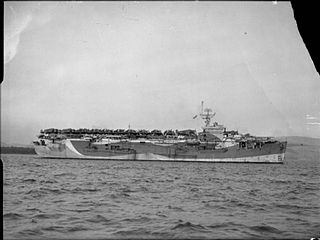
HMS Ameer (D01) was an American escort carrier, the USS Baffins (CVE-35), that was transferred to the Royal Navy in mid-1943. As a Ruler-class escort carrier served in the Far East until the end of the war. Ameer was returned to the US Navy in 1946 and sold off to commercial service.

HMS Speaker (D90), a Ruler-class escort carrier, based on a "C3" hull, was originally the Bogue-classUSS Delgada (AVG/ACV/CVE-40), which was transferred to the United Kingdom under the Lend-Lease program.
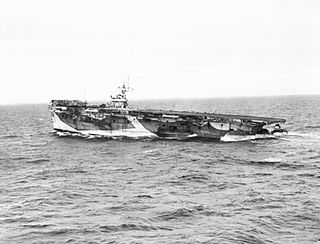
HMS Nabob (D77) was a Ruler-class escort aircraft carrier which served in the Royal Navy during 1943 and 1944. The ship was built in the United States as the Bogue-classUSS Edisto (CVE-41) but did not serve with the United States Navy. In August 1944 the ship was torpedoed by the German submarine U-354 while participating in an attack on the German battleship Tirpitz. Nabob survived the attack, but upon returning to port, was considered too damaged to repair. The escort carrier remained in port for the rest of the war and was returned to the United States following it. Nabob is one of two Royal Navy escort carriers built in the United States which is listed as lost in action during World War II. The ship was sold for scrap by the United States but found a second life when purchased and converted for mercantile use under her British name, Nabob. Later renamed Glory, the ship was sold for scrapping in 1977.

USS Jamaica (CVE-43), was an escort carrier of World War II that served in the British Royal Navy as HMS Shah (D21). Returned to the United States at war's end, she was converted into a merchant vessel and she was sold into civilian service in 1946 as Salta. She was ultimately scrapped in 1966.

HMS Formidable was an Illustrious-class aircraft carrier ordered for the Royal Navy before the Second World War. After being completed in late 1940, she was briefly assigned to the Home Fleet before being transferred to the Mediterranean Fleet as a replacement for her crippled sister ship Illustrious. Formidable's aircraft played a key role in the Battle of Cape Matapan in early 1941, and they subsequently provided cover for Allied ships and attacked Axis forces until their carrier was badly damaged by German dive bombers in May.
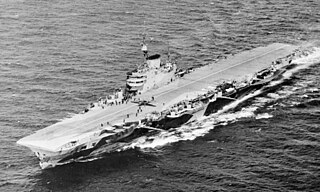
HMS Indefatigable was one of two Implacable-class aircraft carriers built for the Royal Navy (RN) during World War II. Completed in 1944, her aircraft made several attacks that year against the German battleship Tirpitz, inflicting only light damage; they also raided targets in Norway. The ship was transferred to the British Pacific Fleet (BPF) at the end of the year and attacked Japanese-controlled oil refineries in Sumatra in January 1945 before joining the American forces in March as they prepared to invade the island of Okinawa in Operation Iceberg. Indefatigable and the BPF joined the Americans in attacking the Japanese Home Islands in July and August. Following the end of hostilities she visited ports in Australia, New Zealand and South Africa.

HMS Implacable was the name ship of her class of two aircraft carriers built for the Royal Navy during World War II. Upon completion in 1944, she was initially assigned to the Home Fleet and attacked targets in Norway for the rest of the year. She was subsequently assigned to the British Pacific Fleet (BPF) where she attacked the Japanese naval base at Truk and targets in the Japanese Home Islands in 1945. The ship was used to repatriate liberated Allied prisoners of war (PoWs) and soldiers after the Japanese surrender, for the rest of the year. Implacable returned home in 1946 and became the Home Fleet's deck-landing training carrier, a role that lasted until 1950. She briefly served as flagship of the Home Fleet in 1950. During this time she participated in many exercises and made a number of port visits in Western Europe. She was placed in reserve in 1950 and converted into a training ship in 1952, and served as flagship of the Home Fleet Training Squadron. The ship was considered for a major modernisation in 1951–1952, but this was rejected as too expensive and time-consuming. Implacable was decommissioned in 1954 and sold for scrap the following year.

HMS Venerable (R63) was a Colossus-class aircraft carrier of the Royal Navy. She served for only the last few months of World War II, and in 1948 she was sold to the Netherlands and renamed HNLMS Karel Doorman, taking part in the military clash in 1962 in Western New Guinea. Subsequently, she was sold to Argentina and renamed ARA Veinticinco de Mayo, later taking part in the Falklands War.

HMS Perseus was a Colossus-class light fleet aircraft carrier built for the Royal Navy during World War II. The ship was initially named HMS Edgar, but she was renamed in 1944 when the Admiralty decided to convert her into an aircraft maintenance carrier. She was completed in 1945, after the end of World War II, and she made a trip to Australia late in the year. Upon her return to the UK in early 1946, Perseus was placed in reserve. The ship was recommissioned in 1950 to serve as the trials ship for the steam catapult then under development. Over 1,600 test launches were conducted before the catapult was removed in 1952 and she was converted for use as a ferry carrier to transport aircraft, troops and equipment overseas. She was reduced to reserve again in 1954 and sold for scrap in 1958.

The USS St. Andrews (CVE-49) was assigned to MC hull 260 on 23 August 1942, a ship to be built to modified C3-S-A1 plans. She was laid down on 12 March 1943 by the Seattle-Tacoma Shipbuilding Corporation of Tacoma, Washington; redesignated CVE-49 on 15 July; and launched on 31 July; sponsored by Mrs. Robert W. Morse; transferred to the United Kingdom under Lend-Lease on 7 December; and commissioned the same day as HMS Queen (D19) in the Royal Navy.
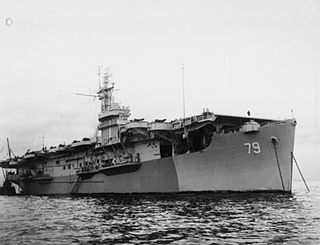
USS Willapa (AVG-53/ACV-53/CVE-53) was a Bogue-class escort carrier built during World War II for the United States Navy. Never seeing American service, the ship was transferred to the United Kingdom as part of Lend-Lease. The escort carrier was renamed HMS Puncher (D79) of the British Ruler class and crewed by the Royal Canadian Navy with aircrew from the Fleet Air Arm. Primarily used as an aircraft transport, Puncher took part in operations along the Norwegian coast towards the end of the war. Following the war the ship was converted for mercantile service and renamed Muncaster Castle, Bardic and Ben Nevis, before being broken up in 1973.

HMS Unicorn was an aircraft repair ship and light aircraft carrier built for the Royal Navy in the late 1930s. She was completed during World War II and provided air cover over the amphibious landing at Salerno, Italy, in September 1943. The ship was transferred to the Eastern Fleet in the Indian Ocean at the end of the year. Unicorn supported the aircraft carriers of the fleet on their operations until the British Pacific Fleet (BPF) was formed in November 1944. She was transferred to Australia in early 1945 to support the BPF's operations during Operation Iceberg, the Allied invasion of Okinawa in May. To shorten the time required to replenish the BPF's carriers, the ship was based in the Admiralty Islands and in the Philippine Islands until the Japanese surrender in August. Unicorn was decommissioned and placed in reserve when she returned to the UK in January 1946.

The Royal Navy built three aircraft maintenance carriers for its Fleet Air Arm before and during World War II. The Abyssinia Crisis of 1934–35 demonstrated to the Admiralty that it needed a depot ship to support the aircraft carriers in active service, just like submarine and destroyer tenders supported those types. Begun just before the start of World War II in 1939, HMS Unicorn was the first ship built in any navy that could "carry out the full range of aircraft maintenance and repair work in addition to the ability to operate aircraft from the flight deck". Unicorn proved the value of the concept and two similar support ships, Perseus and Pioneer were converted into aircraft maintenance ships by modifying light carriers while still under construction. Unlike Unicorn, neither Pioneer nor Perseus were able to land aircraft; they had to be craned aboard.
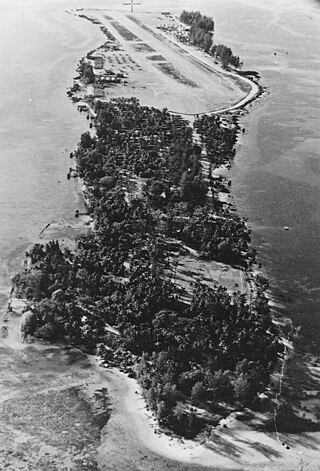
HMS Nabaron was a Royal Navy (RN) Mobile Operational Naval Air Base (MONAB) which was situated at the United States Navy (USN) airfield NAS Ponam Airfield on Ponam Island, Admiralty Islands in Papua New Guinea, which had been transferred to RN on loan. HMS Nabaron was also known as MONAB IV and Royal Naval Air Station Ponam.




















